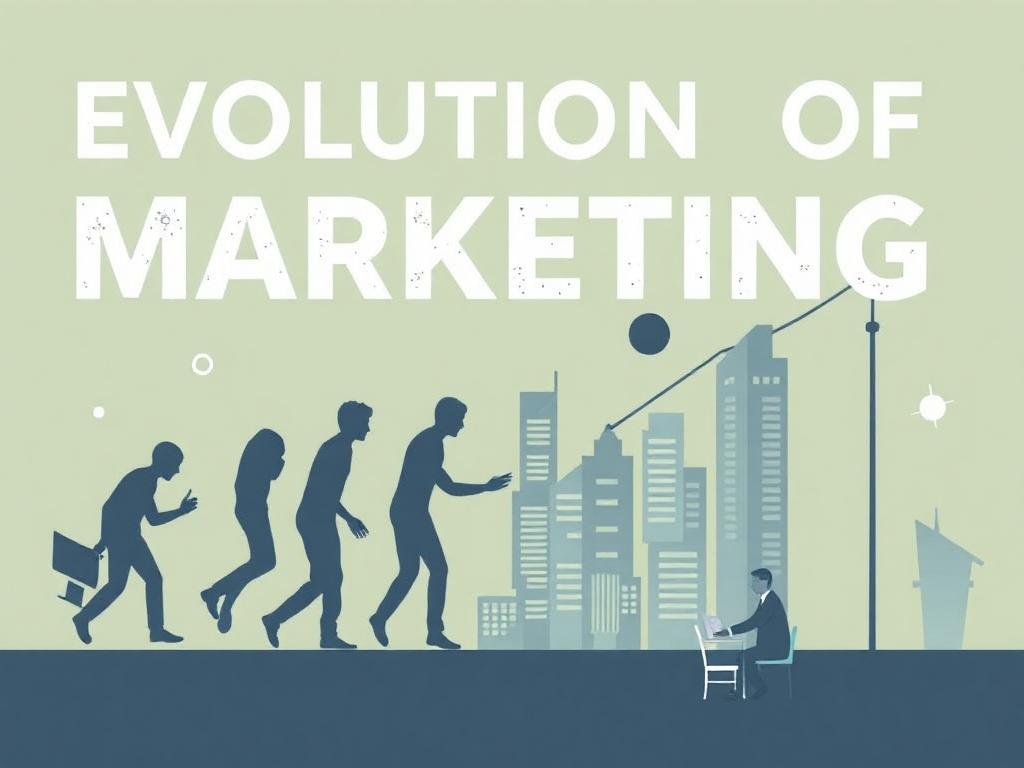Small businesses face a tough battle. A staggering 20% fail within the first year, with ineffective marketing often playing a major role in their struggles. Marketing has undergone a profound change, transforming from traditional methods to digital strategies that define today’s business landscape. This article explores the key evolution phases of small business marketing, offering insights to inspire modern success.
From Word-of-Mouth to Traditional Marketing
The Era of Local Listings and Print Advertising
In the early days, small businesses thrived on word-of-mouth and local exposure. Local directories and newspaper ads were the go-to marketing tools. In fact, many businesses saw measurable success through flyer distribution and local classifieds. For instance, a bakery in a small town flourished purely by relying on positive community chatter and ads in local newspapers during the 1980s.
Direct Mail and Broadcast Advertising
As time progressed, direct mail campaigns and TV or radio spots became popular. The clattering sound of mailboxes filled with catalogs and offers marked a new era. Data from that time shows direct mail had a high response rate compared to its cost. A small clothing boutique in the 1990s ran a successful direct mail promotion that significantly boosted sales, proving that this channel had its merits.
Building Brand Identity Through Traditional Means
Creating a strong brand identity was key in the pre-digital era. Businesses invested in logo design and consistent messaging. This classic approach helped establish credibility and recognition. For example, consider a local coffee shop that built a loyal customer base through its unique branding and storytelling, capturing hearts long before social media.
Check Out: Importance of Marketing
The Rise of the Internet and Digital Marketing
Embracing the Early Web: Websites and Email Marketing
With the advent of the internet, small businesses quickly adapted by creating websites. The early 2000s saw a rise in email marketing, where open rates were impressive. Those who embraced e-commerce saw significant growth. Statistics showed website traffic correlated with higher sales, creating a new avenue for success.
Search Engine Optimization (SEO) and Search Engine Marketing (SEM)
SEO and SEM emerged as powerful tools for visibility. Keywords became the linchpin for attracting customers. Studies indicate that small businesses utilizing these strategies saw higher engagement and conversion rates. Staying updated on keyword optimization remains crucial for businesses wanting to be discovered.
Social Media Marketing’s Emergence and Growth
Social media platforms revolutionized the way businesses connect with customers. Statistics show an explosion in social media usage, leading to increased engagement rates. A small handmade goods shop utilized Instagram to showcase its products, gaining followers and turning them into loyal customers. This shift reshaped customer interactions.
Mobile Marketing and the App Revolution
The Mobile-First Approach and Responsive Design
The rise of smartphones made mobile-friendly websites essential. Stats reveal that over half of all web traffic comes from mobile devices. A responsive design ensures users have a seamless experience, making it crucial for small businesses to cater to mobile users.
Location-Based Marketing and Mobile Apps
Location-based marketing became a game-changer. Apps and services that utilize location data engage customers effectively. For example, a local restaurant using GPS targeting effectively enhanced foot traffic by offering special deals to nearby customers. This strategy illustrates how being location-aware can drive business.
SMS Marketing and Push Notifications
SMS marketing and push notifications have emerged as direct communication channels. With impressive open rates—often exceeding 90%—these methods offer personalized customer outreach. However, it’s vital to use these tools judiciously to avoid annoying customers.
Data-Driven Marketing and Analytics
Utilizing Marketing Analytics to Measure ROI
Understanding marketing metrics is essential for success. By tracking key performance indicators (KPIs), businesses can determine the effectiveness of their campaigns. This data-driven approach allows small businesses to adjust strategies based on what works and what doesn’t.
Personalization and Customer Relationship Management (CRM)
Data allows for personalized experiences. Effective CRM strategies enable businesses to build strong relationships with customers. For example, a local fitness studio using CRM software tailored classes and communication, greatly enhancing customer satisfaction and loyalty.
A/B Testing and Continuous Optimization
A/B testing gives businesses the chance to refine their marketing campaigns. By testing variations of ads, emails, or website layouts, small businesses can discover what resonates with their audience. Numerous success stories highlight how simple changes led to increased conversions.
The Future of Small Business Marketing: Emerging Trends
Artificial Intelligence (AI) and Machine Learning (ML) in Marketing
AI and ML are starting to impact how small businesses market themselves. These technologies automate tasks and enhance targeting capabilities. For instance, businesses are already using chatbots to improve customer service. This shift indicates a promising future for marketing efficiency.
Influencer Marketing and Micro-influencers
Influencer marketing is gaining traction among small businesses. Collaborating with micro-influencers often leads to strong engagement and authenticity. Many shops have successfully leveraged these relationships for a better return on investment.
Voice Search Optimization and Emerging Technologies
Voice search is changing how customers find services. This trend requires businesses to optimize for voice queries, which are often conversational. Staying ahead of emerging technologies will ensure small businesses don’t fall behind in this competitive landscape.
Conclusion
The evolution of marketing strategies for small businesses is marked by significant phases. Adapting to these changes is vital for success. Embracing data-driven strategies and innovative trends is essential for survival. Continuous adaptation is key in the ever-changing world of small business marketing.
Related
Importance of Advertising in Business
7P’s of Service Marketing
Importance of Service Marketing
